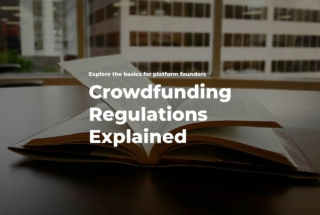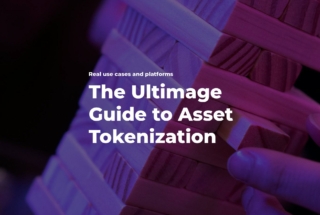Real Estate Сrowdfunding Risks Explained
No time to read? Let AI give you a quick summary of this article.
Before 2008, the opportunities to enter the real estate scene seemed limitless. People willing to make relatively easy money and mostly those who had a limited budget bought widely advertised “Buy’em, Fix’em Method” to start with property investing.
The majority of real estate agents would suggest finding an underpriced house needing repairs. Investing in such real estate required a very low downpayment (or 0 capital at all), but once a newly-bought house got refurbished and fixed, owners could do either of:
- Let the renovated property and generate regular monthly income
- Resell the house and purchase another one with the profit
- Rent out the renovated property and ask a bank for refinancing.
As per the plan, after a few repetitive purchases like this, flipping houses should have led to quick wealth and financial freedom. The benefits and advantages of such an approach to getting rich were:
- Generating additional revenues having a full-time job to renovate and repair the property. Basically, it was supposed to be a side hustle with much better profits.
- Starting small with a lucrative niche at minimum risks and gaining hands-on experience and knowledge about investing.
Buying low and selling high seemed working just fine. Often, people with no stable income or jobs would get mortgages to buy their dream homes.
There was plenty of content and articles like ‘X steps to jumpstart with real estate investing’ with all of those steps promised to be ‘easy’. However, planning on the go and being sure you’ll turn rich ignoring due diligence did not work well.
Lack of regulation in the financial industry, all-time low-interest rates created a housing bubble that snowballed into a global financial crisis.
What you will learn in this post:
The bubble & financial crisis of 2008
At the start of 2006, housing prices were skyrocketing with a subsequent fall, when the Case-Shiller home price index hit rock bottom of 18.2% at the end of 2008.
Growing demand for mortgages that were given to borrowers with questionable financial situation and disproportional increase of their earnings caused a bubble in the housing market.
The credit crisis was one of the contributing factors to the US’ Great Recession. The crisis coupled with high-risk actions of banks led to real-estate-linked securities drop causing a chain reaction globally with an international banking default as a result.
Several well-known economists warned of such aftermath of the real estate boom. Nouriel Roubini1 spoke of a crisis in September 2006, a co-founder of Case-Schiller index, Robert J.Shiller2, wrote a piece on an upcoming crisis a year before it happened.
On top of that, a few followers of heterodox economics3 including Steeve Keen4, Wynne Godley5, who modeled the crisis, and Peter Schiff6, the author of best-selling Crash Proof7 book emphasizing the ‘unsound’ US monetary policies, among many others predicted the meltdown, too.
Warning signs for crowdfunding businesses
Now let us look at the crowdfunding business, see how it’s promoted nowadays, and if equity crowdfunding risks in real estate can be similar to those in regular property investing of the pre-crisis era.
Real estate crowdfunding is advertised as a niche with ‘lower capital requirements’ since the upfront costs are distributed among many investors willing to chip in.
At the same time, some sources8 claim that previously hidden information from the general public on the tenets of real estate investing is now readily available through the Internet.
Therefore, crowdfunding-age investors no longer need to deep dive into studying the sector peculiarities but to go through the details a crowdfunding platform offers.
JOBS Act9 that signed in 2012 opened plenty of opportunities for businesses to issue securities through crowdfunding, which was not an option earlier. Four years later, in 2016, Title III concerning equity crowdfunding was adopted that spur growth in SME activity.
The SEC’s Investor’s Bulletin10 has an exhaustive list of Q&As helping the general public understand the risks of using crowdfunding to finance real estate deals. The regulator introduced a number of limits and rules based on the income and net worth of retail investors as to the capital they can use to fund crowdfunding projects.
Non-accredited backers are not the only ones bearing certain risks though. However, high-net-worth individuals (HNWIs) and accredited investors with years of experience in real estate are less of a concern. As for crowdfunding businesses, they can use lessons learned to avoid a similar to 2007-2009 circumstances and mitigate crowdfunding default risks:
- Beware of mini-bonds as they get restricted by regulators
- Pay particular attention to introducing non-transparent investment vehicles as it’s nearly impossible to predict crowdfunding risks related to such projects
- Discourage ‘golden rush’ to stimulate consumption as it grows faster than retail investors’ incomes
- Partner only with trusted equity crowdfunding software providers that offer solutions compliant with KYC/AML procedures required by regulators
- Consider real estate crowdfunding software to manage deals, gather and report data. Partner with authorized payment processors to hold and manage investor’s money
As for the governments, their responsibility is to constantly remind the general public to have a cash cushion and avoid investing the last penny. Crowdfunding associations develop resources to increase the competence level for investors. However, it will take time before the “general public” will become educated enough to make weighted investment decisions.
Attempts to make crowdfunding more transparent 11is an ongoing effort by many regulators worldwide. Governments warn investors about potential risks and continuously monitor crowdfunding platforms.
They introduce different forms fundraisers need to submit in order to fund their projects.
For example, in the US, a business fundraising under the Reg CF has to file Form C and reveal different operational details including:
- A company’s and appointed management info
- Funding purpose and financial goals
- Type of securities a company offers to backers
- The ways investors will receive securities and dividends
- Annual reporting instructions
However, it’s reasonable to quote [paraphrased] Mark Roderick, a crowdfunding attorney:
“Even if we did and could give investors very understandable accessible disclosures, that doesn’t mean that they would be able to make good decisions”
Final Thoughts
There is a number of risks of crowdfunding real estate investments that can be accounted for, knowing key takeaways from the global economic crisis and the reasons it happened.
Taking into account the global pandemic and the current concerns, officials around the world can encourage businesses to review their initial arrangements and clients’ circumstances to address the changing situation and cope with associated risks and the footprint on the market activity.
On top of that, a reserved capital requirement to safeguard investors can play a crucial role in times of uncertainty like this. For example, FCA obliges loan-based crowd financing business to have at least £50,000 for platforms in its regulatory sandbox and certain % amounts for fully-authorized platforms.
Being prepared for particular risks and studying the past lessons from other market players is a good strategy to build your crowdfunding business from scratch or scale it safely.
If you need any information on how to create a robust crowdfunding platform or require some further info on how we can help your investment business, reach out at hello@lenderkit.com.
Article sources:
- Nouriel Roubini — Global Macroeconomic Strategist & Economist
- Home Page of Robert J. Shiller
- Heterodox economics - Wikipedia
- Steeve Keen
- Nytimes.com
- Peter Schiff
- Crash Proof: How to Profit From the Coming Economic Collapse: Schiff, Peter D., Downes, John: 9780470043608: Amazon.com: Books
- 8 Advantages of Real Estate Crowdfunding over Traditional R…
- What is the JOBS act?
- Updated Investor Bulletin: Crowdfunding Investment Limits Increase
- FCA proposes changes to rules for crowdfunding platforms | FCA



